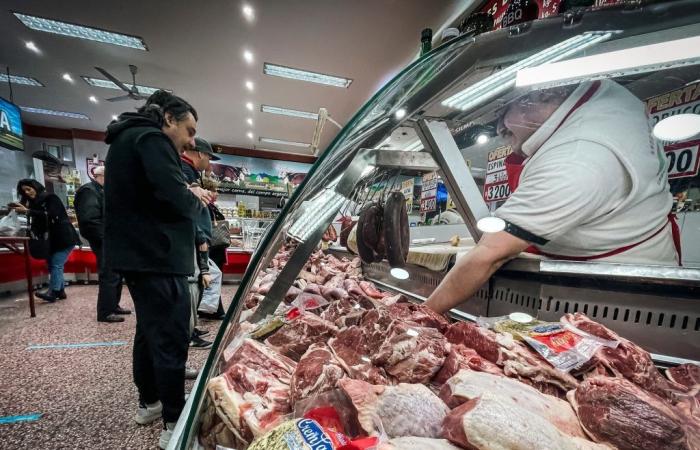In the last year, the prices of food exceeded the level of general inflation. They increased 289.4%, according to the latest official data available until May, against 276.4% accumulated by the Consumer Price Index (CPI) in the same period. In this context, a set of products that, until recently, were part of the consumption basket of middle class families, Today they became a “luxury”which is already accessible only to high-income consumers.
The most emblematic case, perhaps, is that of meat. Although minced meat at $4,673.95 per kilo (according to the INDEC survey) can resist on the Argentine table because it is one of the cheapest and most productive cuts, think about Eat roast It is already a category forbidden to many.
With a cost of $6,506.47 per kilo, this beef cut is priced below the buttock, commonly used to make milanesas and is sold, on average, at $8,715.94, according to the prices reported by the INDEC this week with May data. That is, these are average GBA prices, since Depending on the neighborhoods, most variants of beef average $10,000 per kilo on the counters. Except for the loin that exceeds $12,000.
In fact, meat consumption is at the lowest level of the last three decades. It fell 17.5% in the first quarter this year compared to the same period in 2023, according to data from the Chamber of Industries and Commerce of Meats and Derivatives of the Argentine Republic (CICCRA).
He fish, An essential consumer food for health well-being, also became an excess for people’s pockets: fresh hake filet (the cheapest) sells on average for $6,744.90. Although jumping to a slightly tastier variant, such as sole or salmon, can raise the expense to about $11,000 and $35,000 per kilo, respectively.
Sausages, although easily dispensable from the diet, form a superior category when it comes to checking out the cash register. According to official data, cooked ham, at $10,545.99 and salami, at $12,256.06 They lead the podium of the most expensive in the official table of cold cuts. Of course he raw hamon the shelves, far exceeds that record: the cheapest starts at $40,000 per kilo.
A separate chapter deserves dairy, assuming that a liter of fresh milk costs $1,320.05. Between the cheeses, Pategras has a price of $14,999.97 per kilo and Sardinian, only for “VIP” buyers, is labeled at $15,436.43, on average according to the statistical agency. In year-on-year terms, the increase in this variant of grated cheese was 297.9%.
The 200 gram package of butter costs $2,724 and rose almost 10% from one month to the next. For half a loaf of butter you can buy a yogurt: $1,368.30.
Other mass consumption products that are already synonymous with “abundance” in homes are the coffee (ground, half a kilo, costs $6,508.50); the shampoo (the 400 cc container costs $4,210.97) and the disposable diapers, which are priced at $3,833.44, for a pack of 10 units.
He table bread (lactal type), According to official data: the 390-gram package went from $2,271.98 to $2,399.72, that is, an increase of 5.6% between April and May. It accumulates 115.6% so far in 2024 and in interannual terms, it widely exceeded general inflation, with an increase of 359.5%.
With products such as fruit and vegetables, there is hope that the sumptuousness of current prices will be reversed, due to its seasonal nature. Under this expectation, greengrocers today “offer” a kilo of tomatoes at $3,759.92 or lettuce at $3,430. According to a CEPA survey, Lettuce with 962.3% and onion with 598.5% were the two species that had the greatest interannual variation until last month.
In the first week of June, food prices did not show any variation, according to the consulting firm LCG. Although, in the second week of the month they grew 1.5% compared to the previous one. That means an accumulated of the first 15 days of 3.6% and a monthly average of 4.8%.
Meat and dairy continue to rise. “If the monthly variations are taken, “In June, meat and dairy products explained most of the increase.”the consultancy stated in a recent report.
The acceleration in food prices in recent days coincided with the rise in the prices of alternative dollars. Therefore, they turn on a warning light for the impact they may have on the June price index, when it is ruled out that monthly inflation shows an increase over the May level (4.2%) as a consequence of the rate increases.






